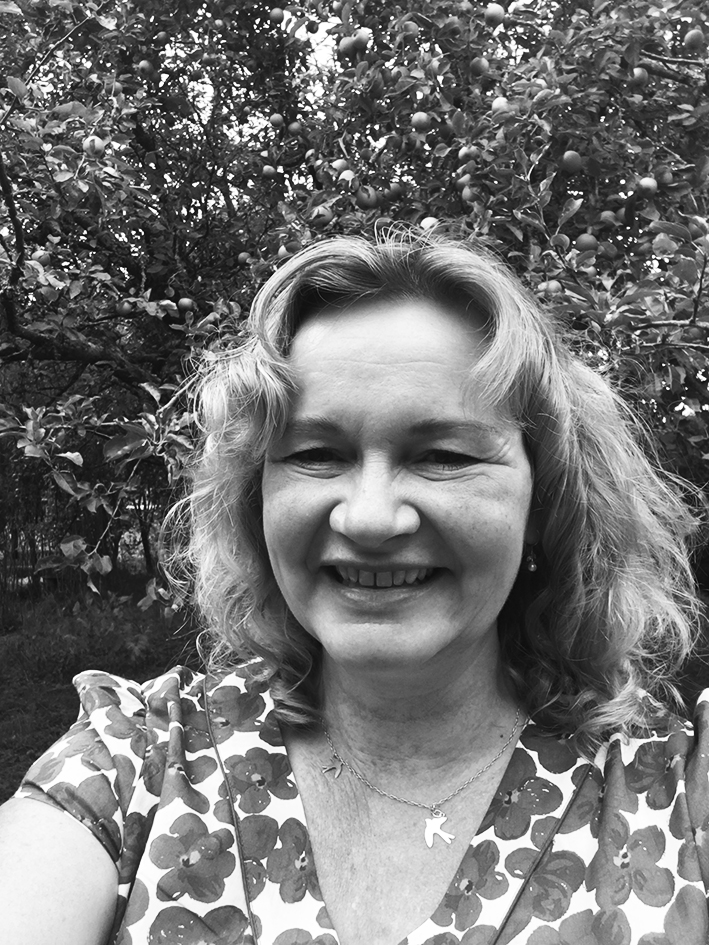With a song like the light through slow-poured honey, the coal-black male blackbird (Turdus merula), with its yellow-gold bill and matching ring around a big, dark eye, is familiar almost everywhere. Along with the subtly-dappled, earth-brown female, blackbirds live alongside us, sharing spaces we’ve created or appropriated readily; urban, suburban or rural. Appearing almost tame, yet quick to scold with indignant, loud alarm, they accept us as just another animal: reminding (sometimes reprimanding) us, that’s what we are.
The blackbird is a gateway bird to social and nature cohesion. It’s a bird we all have access to, whether in deepest countryside, or a suburban garden. It is a woodland bird that shows us even our urban human spaces can be woodlands too: include nature in our planning, and be rewarded by song and wellbeing. They are a way into nature connection for a child (or anyone).
Blackbirds don’t yield their ground, they challenge us, dare us even, with a cocked head and bright, enquiring, gold-ringed eye, to live alongside them in a better world, where we are part of the same nature, pausing in awe in a saturation of honeyed song.
Blackbirds are members of the thrush family. Explore this group of birds in our guide to Britain's thrush species.
Where do blackbirds live?
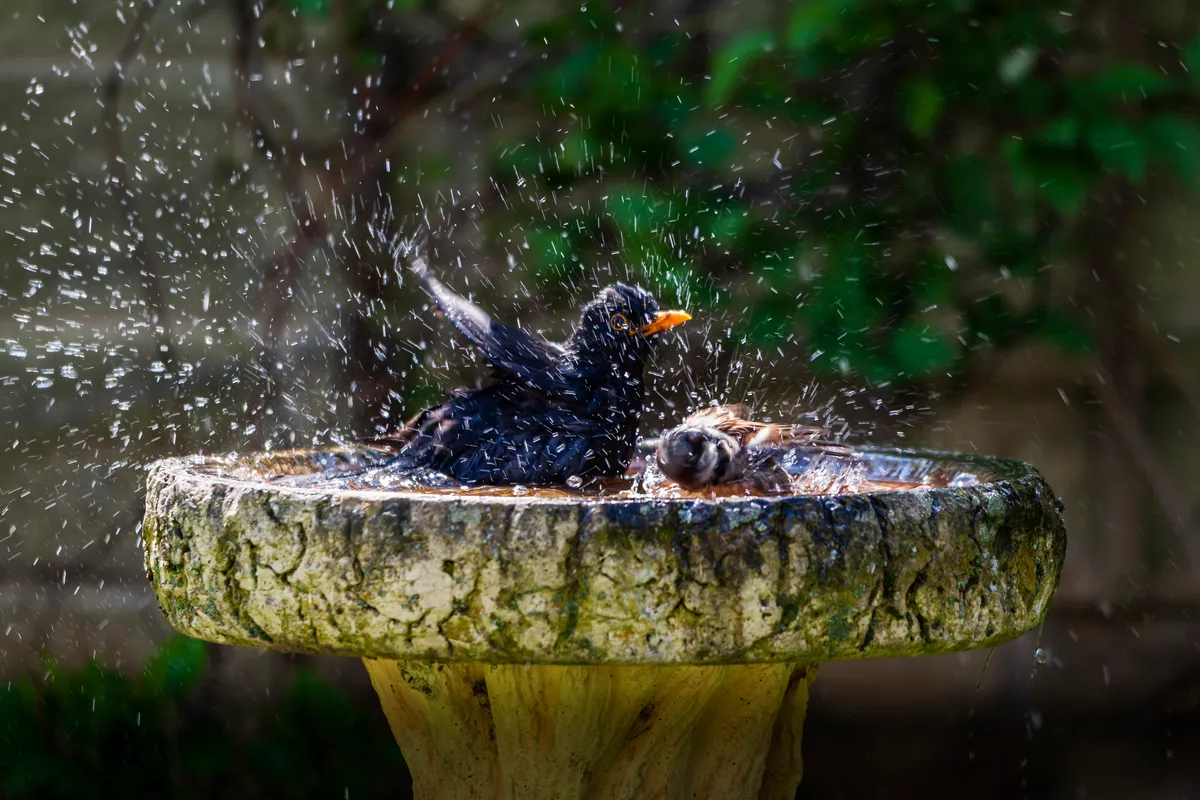
Our most neighbourly and recognisable member of the thrush family is never far away. Blackbirds live almost anywhere, from woodland, gardens and parks, to countryside, urban brownfield sites and coasts – everywhere except the highest peaks.
As the RSPB's Big Garden Birdwatch reveals each year, gardens can provide excellent habitats with food, shelter and nesting places in the form of shrubs, hedges and climbers. Close territories are actively defended by gatepost posturing, with wing and tail flicks. Males (and to a lesser extent females) patrol borders, lowering their head into a run like a linesman, or a rugby player with the ball, often using lines we’ve created as boundaries along a path edge, kerb, or roof ridgeline. If this doesn’t see an opponent off, a fight on the ground ensues.
Numbers swell in winter with migratory birds from northern Europe (recognisable by their duller bills). Genetic leucism or partial albinism sometimes causes white feathers or pale patches in blackbirds.
For more on garden birds, see our guide to what species visit gardens – and how to attract them.
What do blackbirds eat?
True omnivores, a blackbird’s resourceful diet includes insects, caterpillars, berries and fruit. Earthworms are a staple (blackbird’s suffer in droughts when worms are under baked earth). They will even take tadpoles from shallow garden ponds. Blackbirds are ostensibly a woodland bird, and can be heard loudly and furiously flinging leaves about to find insects, eggs and grubs beneath hedges and shrubs, like a teenager who has lost something on the bedroom ‘floordrobe.’
Large light-gathering eyes, circled by a ring of Romani gold, give them good visibility in low light. In the countryside, this makes them early risers and late sleepers. In warmer, suburban settings, they lie in longer, though some stay up very late under artificial light, streetlamp-singing into the night.
Watch from a kitchen window, as one hunts with a listening ear, and pulls a worm out in the gruesome-comedy of an elastic stretch.
Where do blackbirds nest?

Nesting varies with the weather, but is a long season (early March to late July) with 2-3 broods raised from 3-6 sky-blue, or sea-green, brown-speckled eggs.
Built by the hen, the nest is a beautifully crafted, deep cup of twigs, grasses and other natural materials, plastered in with mud. Typically low in a hedge, bush, climber or even sheds and porches.
The hen incubates eggs that hatch after two weeks. Both parents feed chicks that fledge two weeks later. They can fly and are independent a mere week on.
How long do blackbirds live?
A blackbird’s lifespan averages 3-4 years, although the oldest known wild blackbird was 21! Cats, cars, loss of habitat or access to food in a harsh changing climate are the biggest threats.
Blackbird songs and calls
Similarly, their low frequency song has evolved to travel through dense woodland vegetation. And what a song: rich, melodious, languid and sensual as a torch singer in a smoky night club (including a throaty chuckle at the end). It is a song delivered with insouciance, whether from a barn roof along a quiet country lane, or the top of a bus shelter in the suburbs. An old phrase ‘to whistle like a blackbird’ is to do something effortlessly. Ornithologist and writer W H Hudson thought it closer to human song than any other bird, and this is true, in phrasing, tone and tune. Repeated phrases even sound like human words. The blackbird is our family’s ‘treacle birdie.’
Though they have a bold, commanding, intelligent demeanour, blackbirds are also highly-strung (this seems to emanate from righteous indignation more than anything.) A hysterical, rising and falling shrill is a familiar reaction to perceived threat, but an urgent ‘chuck, chuck’ greets ground predators such as cats, stoats and weasels, and a high, thin ‘seeeip’ calls out aerial predators, such as sparrowhawks or owls. Evening brings the sounds of the pre-roost ‘pinking hour’, where bird after bird repeatedly calls what is possibly a false alarm, of ‘pink pink pink’ or ‘whit, whit, whit,’ sending nervier birds elsewhere to roost and ensuring their own safe space. It is an atmospheric chorus of steel on flint, chipping off sparks to trim a night-light.
Blackbirds in art and folklore
It’s no surprise that blackbirds abound in myth, legend and art. From Kenny Hunter’s modern frieze of cinematic, stop-motion birds in London’s Leicester Square, to the Welsh Mabinogion: as the three birds accompanying Celtic Queen Rhiannon, they transported people between worlds through their song. Blackbirds seem of us and our world in a profoundly ordinary way, yet also, as poet R S Thomas puts it, with ‘a suggestion of dark places’ about them.
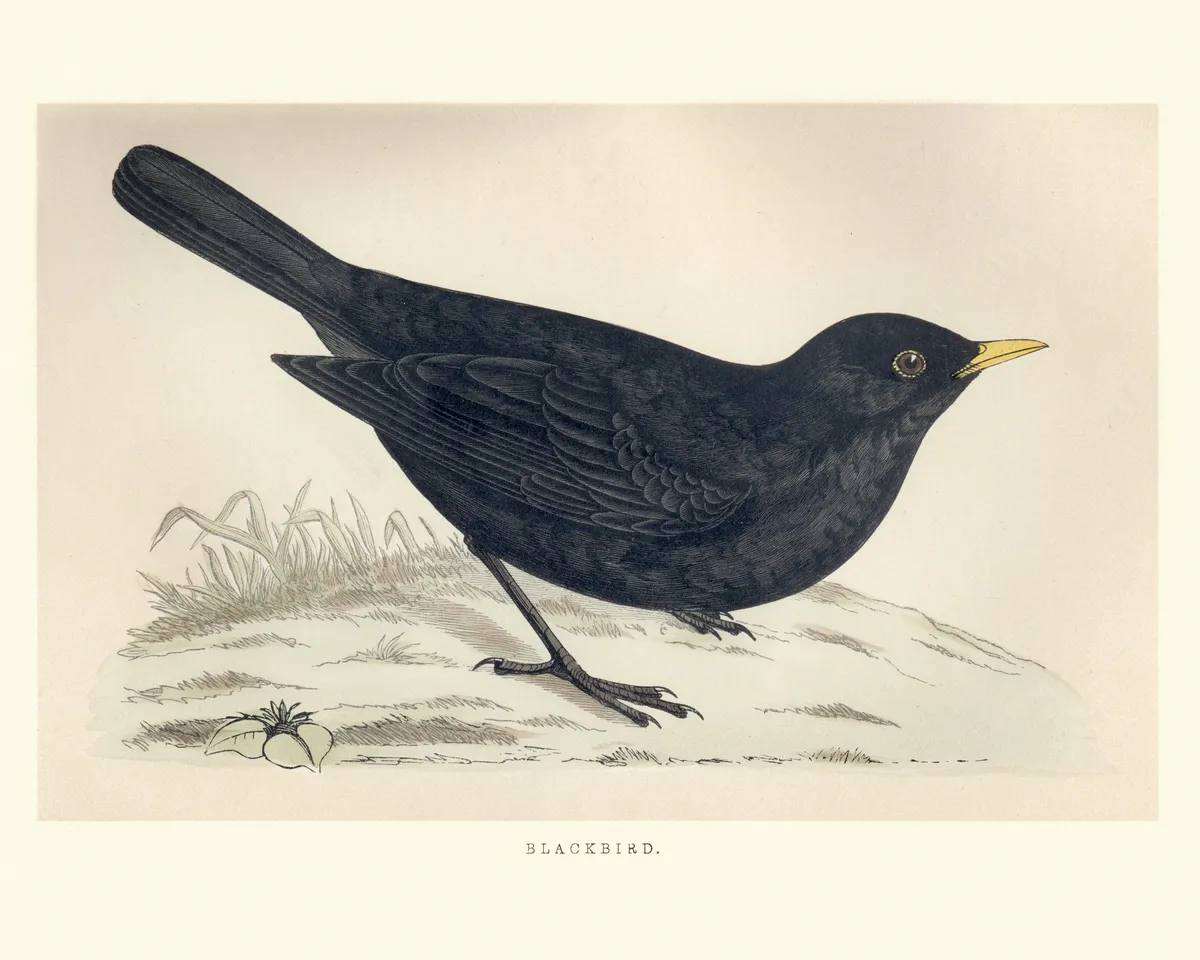
We have put blackbirds in dainty dishes to amuse Kings (tucking them mercilessly under a pastry lid before serving) and caught roosting birds to supplement meagre rural diets, as late as the 1940s.
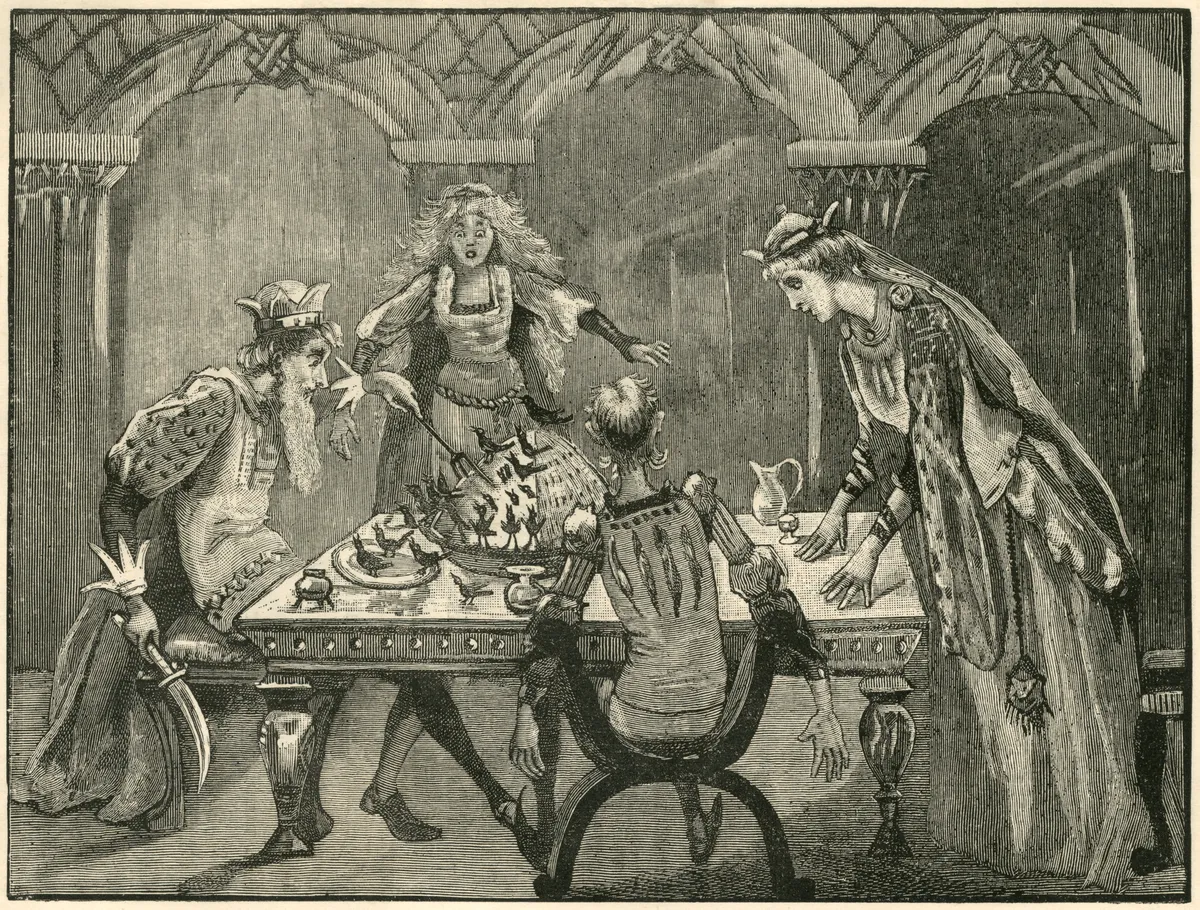
Poets and songwriters have celebrated the blackbird as symbols of human suffering and struggles, from love, to witch trials and the oppression of black people. This includes artists as diverse as Rachel Unthank, Sam Lee, Jeff Beck and singer-songwriter Marley Munroe, aka Lady Blackbird (after the 1966 protest song by Nina Simone about the struggles and pain of black women). The Beatles’ Blackbird is said to address the Civil Rights Movement too, and a blackbird features in Radiohead’s album A Moon Shaped Pool (2016) as witch-victim.
Blackbirds recur often in the work of Kate Bush; in a witch-trial in Hounds of Love (1985), in a video about the end of a long relationship And So is Love and her eighth album Aerial is saturated with birdsong, including Kate riffing along in an extraordinary call and response duet with a blackbird that merges into one voice. The album’s cover masquerades as a mountain range at sunset, but is actually the waveform of a blackbird’s song.
Poets recognise a bird that has endured with us through time, too; for Edward Thomas in his pause-poem Adlestrop, where unending blackbird song ripples across counties in a moment of profound peace before the outbreak of war, to Seamus Heaney’s loved ‘picky, nervy goldbeak— on the grass when I arrive, in the ivy when I leave’ and R S Thomas’s ‘slow singer … loading each phrase with history's overtones, love, joy and grief.’
How to tell the difference between male and female blackbirds
Male and female blackbirds are very different in colour leading to some people mistaking them for different species. However, once you know the basic differences, you'll soon find it easy to tell them apart. Juvenile blackbirds are tougher to identify.
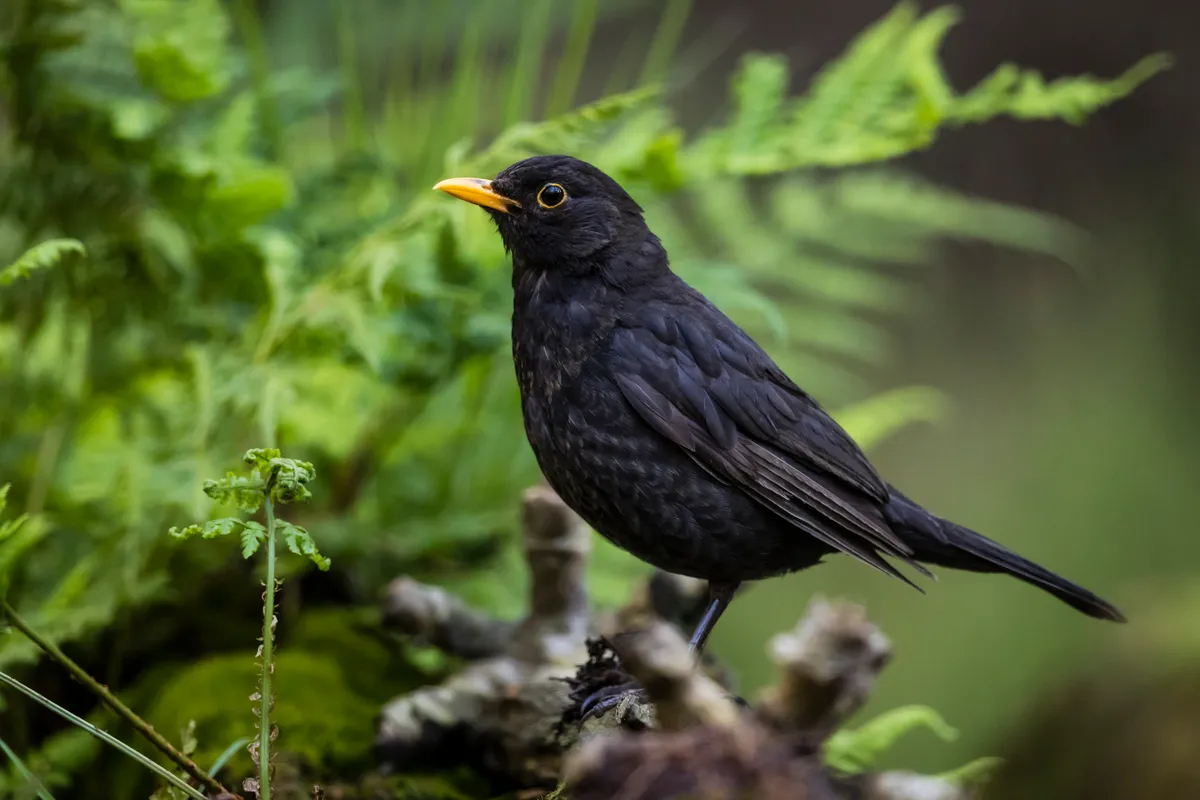

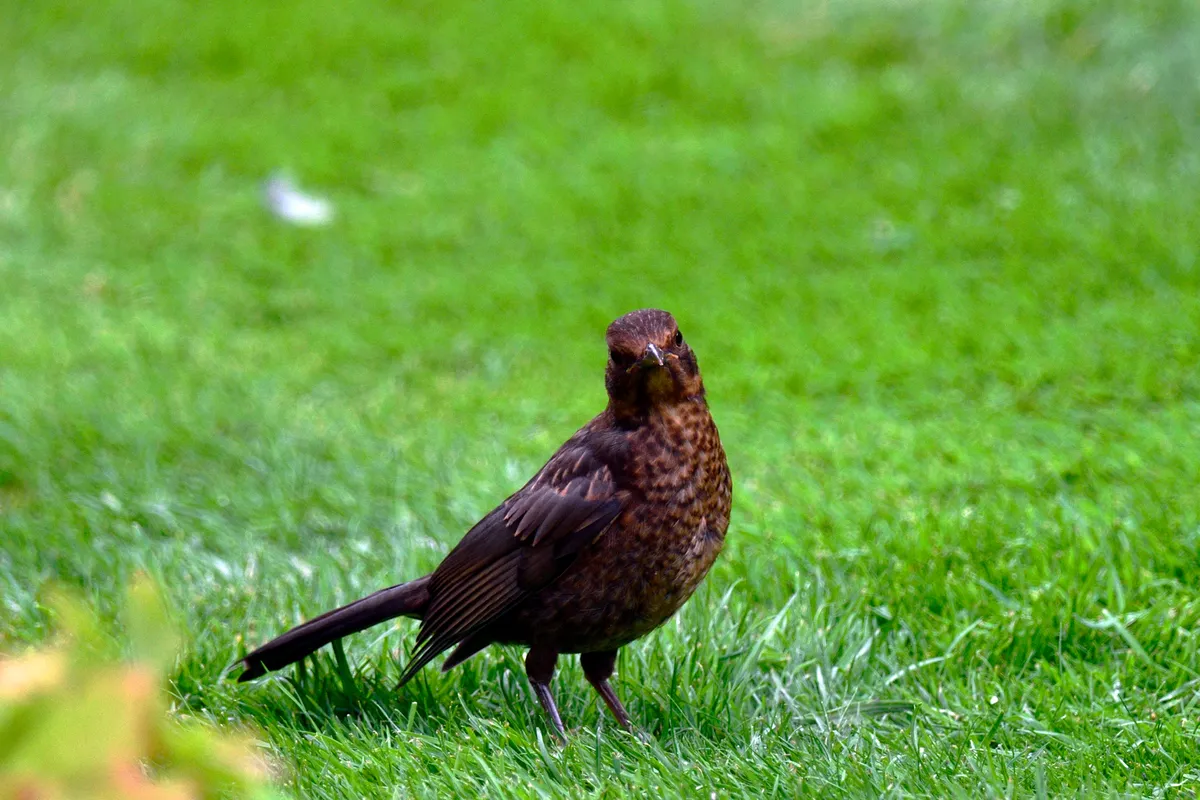
Closely related species
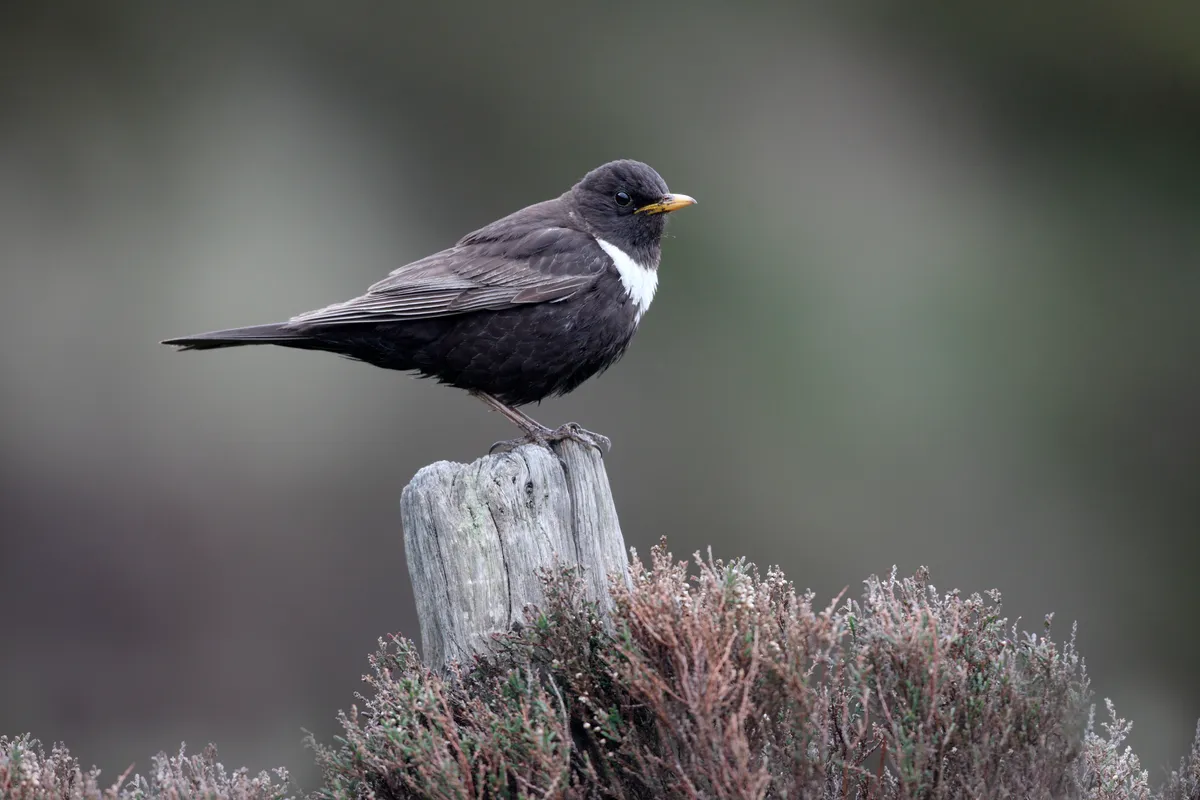
The ring ouzel is known as the ‘mountain blackbird.’ It is migratory, spending winter in southern Europe and North Africa. It arrives in March and nests on the highest mountains and moorland.
